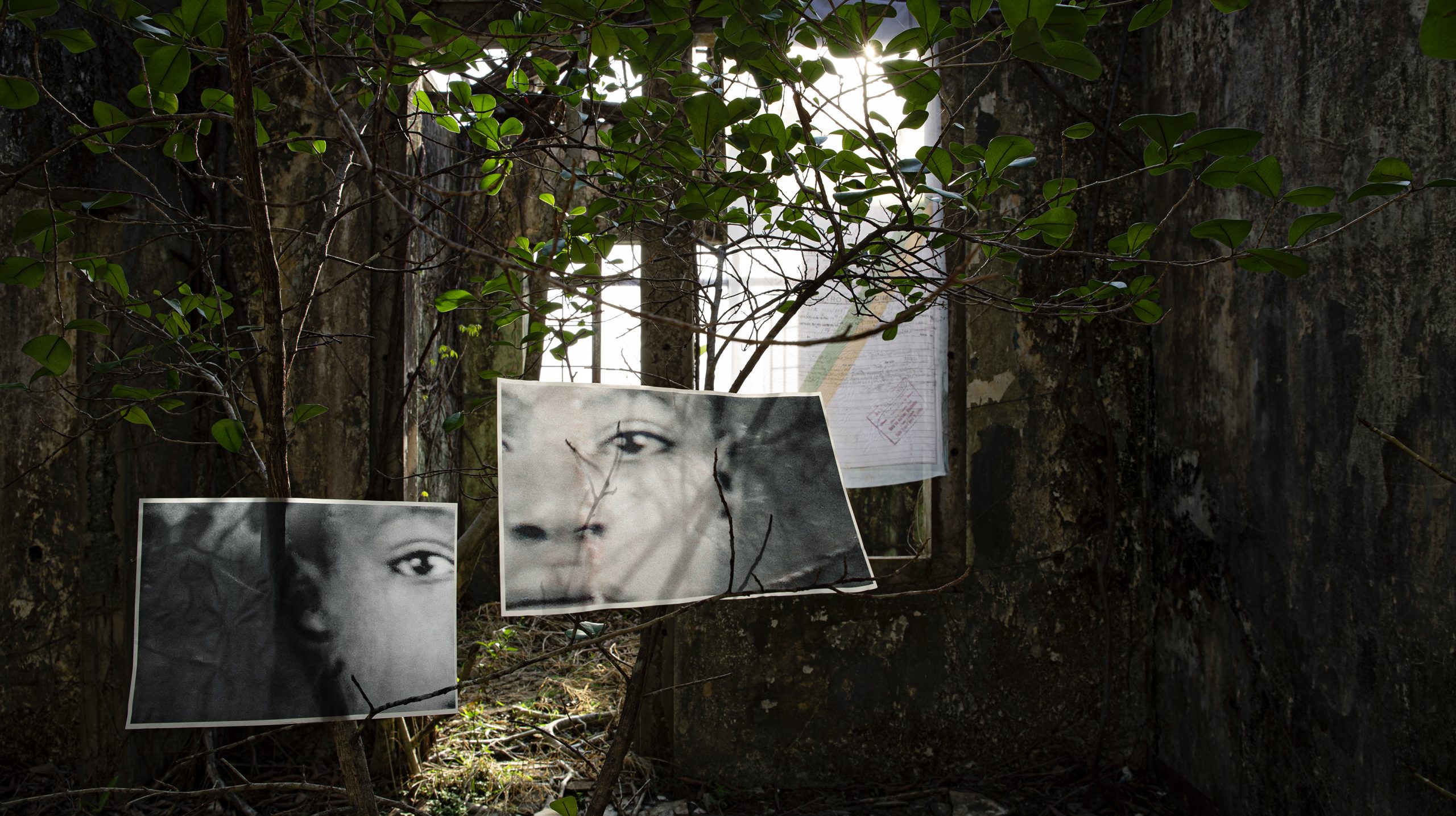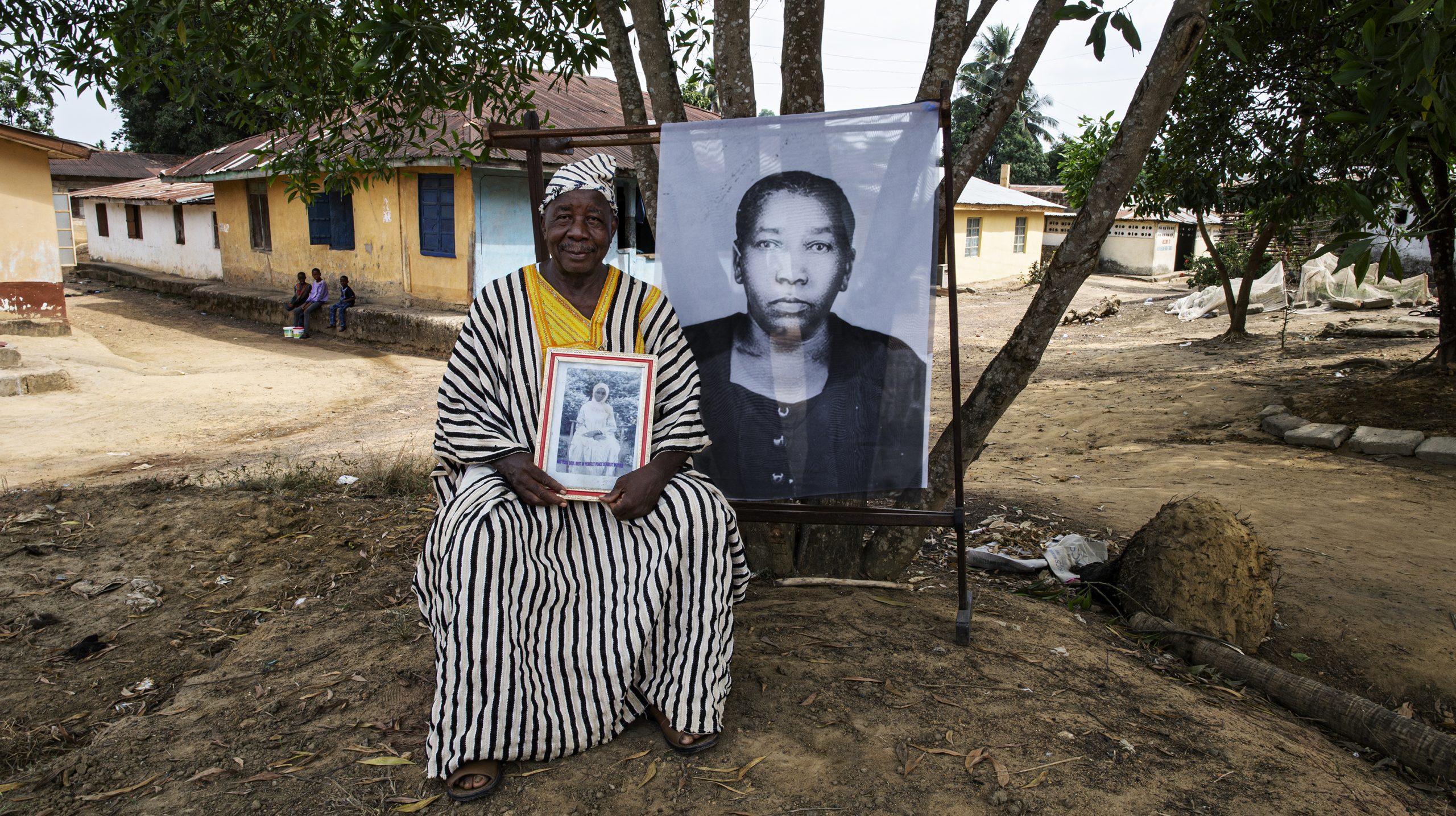Humanity’s habit is to think about time in a linear way— to put things in order, in a line — so that we have a series of independent facts. Actions change the course of history. I am only like this today because my parents did things in one way. Other things happened with my grandparents, or even with my great-grandparents which led them to certain choices. All of this probably affected my present, and the fact that I am writing this text today can change my future. The linearity of time puts an end to things that do not happen, transforming them into something much closer to a comma or a running sentence. Perhaps a chapter change or a new paragraph. Little by little we see that we are much more the ones who tells the story — an omnipresent narrator — than we are the story’s main character.

Outros Fundamentos II, 2017 – 2019
My grandparents and my parents become some of the characters who populate the stories I tell today. They are part of what I carry as my ancestry and with my story. So, it is clear what the artist Aline Motta means when she talks about “time as the centre of a circle”. Aline, is an artist who reflects on connections, on conversations, on bridges. The memories in all her work become as natural as the water that connects her works. It is an invitation to immersion; to diving. A shared ancestry and the reflection of history. In a conversation with me for Bubblegum Club, the artist answered some questions about her work, her way of inspiring and seeing what circulates in us.
Your artistic work is focused on memory. Not only individual memory, but also a memory that crosses and intersects with others all over our country. It reaches beyond memories — it is a construction of history. What is it like to be in this position, not only as an artist but also as a narrator, of whom the story is told through the image?
There’s so much to be said and also to be rewritten about the way we tell our stories in our own terms. For so long, we only had hegemonic voices in the public arena highlighting whatever was important to them in order to keep control of the narrative and to stay in power. It is a subversive act to seize hold of language and bend it and twist it to fracture the very same public space now in dispute. I move myself and my work towards a constant destabilising of these rigid structures, even sonically and rhythmically, using many strategies that may seem too subtle to shatter the preconceived notions people would expect about a practice that is so personal and intimate.

Pontes sobre Abismos I, 2017
History as a source of a work makes me think not only of memory but also of time. This in a way brings us all the poetics of photography and history. The relationship between time and art is very ambiguous, as no chronology is needed to put them together. For you, as an artist, what is this combination of art and time like?
The more I’ve been looking into Central African cosmologies and cosmo-perceptions, the more I understand how I’ve been juxtaposing different temporalities into one single photograph with these photographs becoming frames and these frames turn into films. I’ve been creating images in such a way that each photograph contains all the temporalities; the past, a presentification of the past and a somewhat dystopian future because it is not guaranteed that it will happen. It is like when you see yourself in the centre of a circle and you become aware of time spiralling onto itself. How does that experience translates itself into an artistic practice is a foundational aspect of my work.

Pontes sobre Abismos III, 2017
Each artwork has its own peculiarities and characteristics. I see in your works a great presence of transparency and a construction of layers. All this in a way that is more than literal, converge a lot with your ancestry and rescue. What is your way of structuring the work?
I think my work is not so much about transparency, but more about opacity. There’s a see-through quality to it, however, so much is left unseen and open to different interpretations. It is also built in a way that is so permeable that invites people to fill in the gaps with their own histories and experiences. Over the years I’ve been noticing that this is a shared diasporic language that so many Black artists across the globe have been using it. Connecting also with an audience that might also have this shared repertoire to deeply engage with the work.

Outros Fundamentos IV, 2017 – 2019
I read in an interview that you had/have a great desire to be a traveler. There is a presence of journey also accompanied in your work your work. Do yo think these desire is speaks through your works and do you think this action has transformed your work in some way?
The other day I realised that water is a time machine. Water holds memory and I feel that I have been using it as a vehicle to channel its transmutational qualities into my work. So over time, I think that I did become a traveler, but more so a time traveler by being an artist and by being seen as one.

Filha Natural II, 2018 – 2019



















































